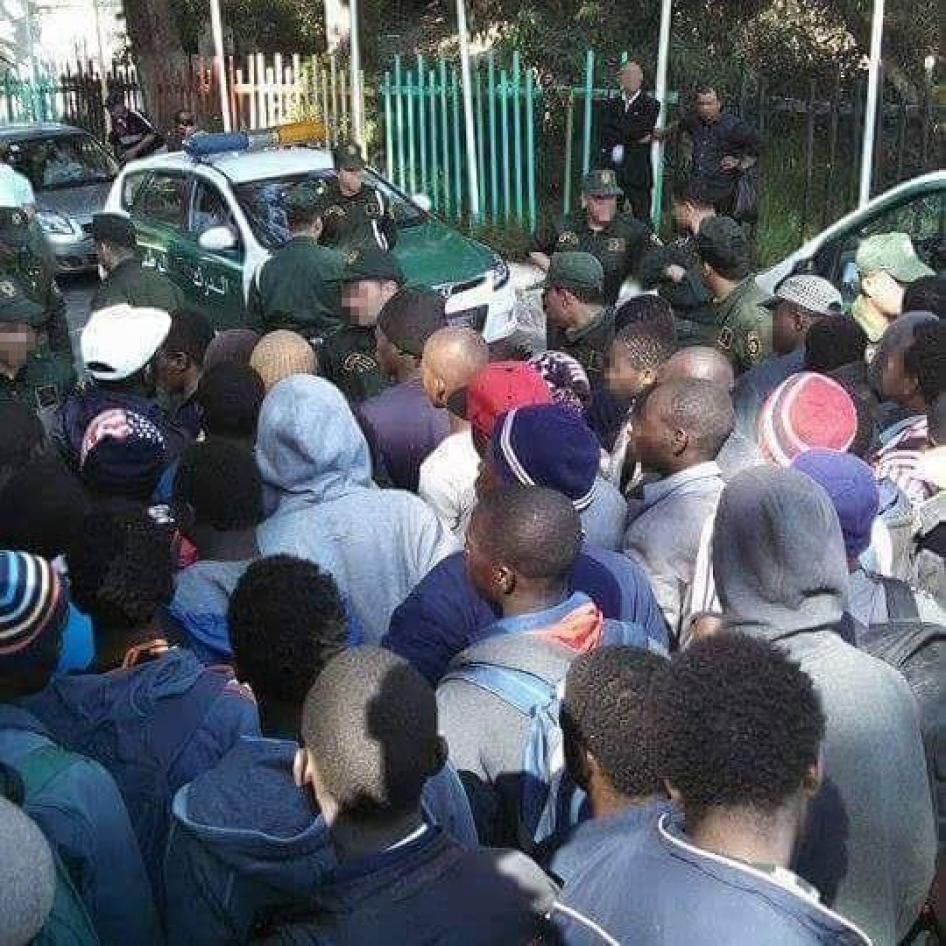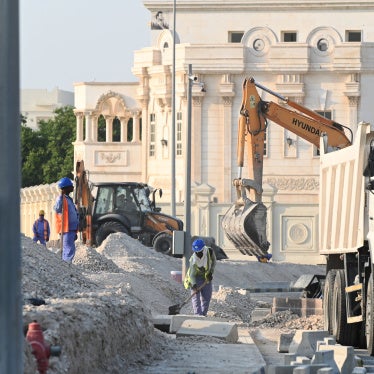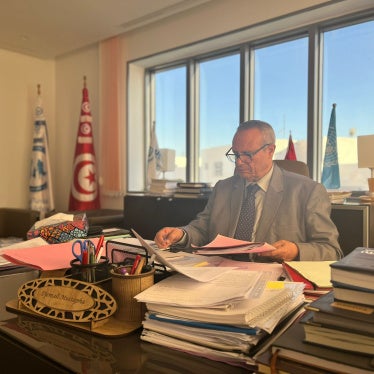(Beirut) – Algerian authorities since December 1, 2016, have rounded up more than 1,400 sub-Saharan migrants and reportedly deported at least several hundred across the border into Niger, Human Rights Watch said today.
Security forces rounded up the migrants in and around Algiers, the capital, and bused them 1,900 kilometers south to a camp in Tamanrasset, from which some were bused into Niger. The Algerian government has said nothing officially about the operation; the embassy in Washington, DC, did not respond to a request for comment.
“A mass and summary deportation of migrants, including men and women who may have fled persecution or have worked for years in Algeria, would violate their rights,” said Sarah Leah Whitson, Middle East and North Africa director at Human Rights Watch. “The right of a country to control its borders is not a license for lawlessness.”
Those forcibly transported to Tamanrasset, in southern Algeria, include some registered refugees and asylum seekers, as well as migrants who have lived and worked for years in Algeria. It is not known if any refugees or asylum seekers were among those deported.
Convoys of expelled migrants were seen traveling through the town of Arlit, in northern Niger, and later in the city of Agadez, further south, according to unconfirmed reports.
On the afternoon of December 8, authorities in Tamanrasset told the migrants who were still being held there that they were free to return north. It is not clear if this decision covered all of those who had been forcibly transported there.
As a party to the 1951 Refugee Convention, Algeria is barred from forcibly returning any recognized refugee, asylum seeker, or any other foreigner to a place where they would face a threat of being persecuted, tortured, or subjected to inhuman and degrading treatment. The claims of anyone expressing such fears should be examined in full, and fair refugee status determination procedures should be completed before anyone can be deported.
In addition to being a party to the 1951 Refugee Convention, Algeria is also party to the International Convention on the Protection of the Rights of All Migrant Workers and Members of their Families, which prohibits collective expulsions of migrant workers and their families and requires that each expulsion be examined and decided upon individually. The convention applies to all migrant workers and their families, irrespective of their status.
Authorities took the sub-Saharan migrants into custody at their homes and workplaces and first bused migrants to a facility in Zeralda, a suburb of the capital. On December 2, the authorities forced some of the migrants into a first convoy of buses heading toward Tamanrasset, 1,900 kilometers south.
On December 6, Human Rights Watch reached two men by phone who were in a second convoy of buses heading south from Zeralda. They separately provided similar accounts of police rounding them up and placing them on the buses. They said the authorities did not screen them to ascertain their situation or refugee status, provide information about their rights, or allow them to contact the United Nations High Commissioner for Refugees or consular representatives of their country of origin, they said.
The men said that on December 1, the mayor of the Dely Ibrahim commune and several other officials came to their building, where more than 150 migrants live, and asked them to collect their belongings and enter nearby vans belonging to the gendarmerie. The mayor told them they were being relocated to a safer building to protect them, following clashes that they had had with Algerian residents, they said.
Thierry, from Cameroon, said that the vans transported them to Zeralda, where he discovered hundreds of others, all of whom appeared to be sub-Saharan Africans. Some were sleeping on the ground, as there were no mattresses. He said that gendarmes took their belongings when they arrived. When Thierry asked the commander to return them, the commander replied, “This stuff belongs to Algeria. You did not come from your countries with all of these things, and so they have to remain in Algeria.”
Thierry said that on December 2, the gendarmes assembled the migrants in the camp and ordered them to board buses to be expelled to their home countries. When migrants protested, the gendarmes clubbed them to force them onto the buses, and used teargas, injuring many people, including women and children. He said he remained behind with hundreds of others as the first convoy of buses left. On December 4, at 5 a.m., gendarmes ordered the remaining migrants into a second convoy of buses. Thierry said he counted 24 buses, each with about 70 seats. He said that he assumed his bus was heading to Tamanrasset because he had called a passenger in the December 2 convoy who had already arrived there. Thierry said the passengers on the second convoy had no water for almost a day.
Ismael, from Cameroon, said he had been living with his wife in Algiers for a year and a half. He said he has documents recognizing his refugee status from the UN refugee agency (UNHCR) office in Algiers. He said the gendarmes had not checked the Africans’ documents to verify who had legal residence or was registered as a refugee or as an asylum seeker. He said that when he showed the gendarme commander in Zeralda documents proving his refugee status, the commander replied, “This is not my problem, I can’t do anything for you.”
Human Rights Watch spoke by phone on December 7 to Adele, a woman from Cameroon who said her bus, which left Zeralda three days earlier, had reached Tamanrasset at 3:30 that morning. Adele said that she had lived in Algiers for five years. She said as they were approaching the Tamanrasset camp, she saw several buses departing. She reached several people on the buses by phone who said they were heading to Ain Guezzam, a town on the border with Niger. She lost contact with them at around 6 a.m., she said.
Human Rights Watch also spoke with an Algiers-based journalist who said she was able to speak with one migrant on a convoy as it entered Niger, after which he was unreachable.
The Algiers-based journalist, who asked not to be named, had interviewed migrants rounded up in several neighborhoods in Algiers, including Ain Beniane, Cherraga, Ouled Saied, Draria, Borj el Kifane, and Zeralda. She said most of those rounded up were from West and Central Africa. She was able to reach one of them after his convoy crossed into Niger but lost contact thereafter.
Most estimates of the number of sub-Saharan migrants in Algeria range from 60,000 to 100,000, most of them having arrived since 2000.
Farouk Ksentini, the head of the National Consultative Commission for the Promotion and Protection of Human Rights, a state institution that reports to the presidency, was quoted in the Algerian daily Assawt Al Akhar (The Other Voice) on December 5, accusing migrants of “spreading diseases,” including AIDS. “These diseases are commonplace in these communities,” he said, adding that the presence of migrants and refugees in several regions of the country can lead to many problems for Algerians, and that these migrants “don’t have a future in Algeria.” He reaffirmed these remarks in an interview with the news site Tout sur l’Algérie.
Algeria is a party to the 1951 Refugee Convention and its 1967 Protocol. The convention prohibits a country from expelling or returning a refugee to a place where his life or freedom would be threatened – the principle of nonrefoulement. In cases of expulsion that would not result in refoulement, states party to the convention are prohibited from expelling a refugee lawfully in their territory save on grounds of national security or public order, and in those cases, the convention requires the state grant refugees an opportunity to challenge the decision.









